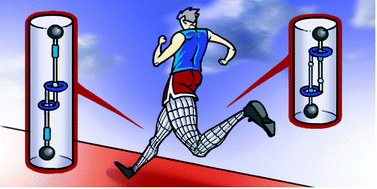Great expectations: can artificial molecular machines deliver on their promise?†
Abstract
The development and fabrication of mechanical devices powered by artificial molecular machines is one of the contemporary goals of nanoscience. Before this goal can be realized, however, we must learn how to control the coupling/uncoupling to the environment of individual switchable molecules, and also how to integrate these bistable molecules into organized, hierarchical assemblies that can perform significant work on their immediate environment at nano-, micro- and macroscopic levels. In this tutorial review, we seek to draw an all-important distinction between artificial molecular switches which are now ten a penny—or a dime a dozen—in the chemical literature and artificial molecular machines which are few and far between despite the ubiquitous presence of their naturally occurring counterparts in living systems. At the single molecule level, a prevailing perspective as to how machine-like characteristics may be achieved focuses on harnessing, rather than competing with, the ineluctable effects of thermal noise. At the macroscopic level, one of the major challenges inherent to the construction of machine-like assemblies lies in our ability to control the spatial ordering of switchable molecules—e.g., into linear chains and then into muscle-like bundles—and to influence the cross-talk between their switching kinetics. In this regard, situations where all the bistable molecules switch synchronously appear desirable for maximizing mechanical power generated. On the other hand, when the bistable molecules switch “out of phase,” the assemblies could develop intricate spatial or spatiotemporal patterns. Assembling and controlling synergistically artificial molecular machines housed in highly interactive and robust architectural domains heralds a game-changer for chemical synthesis and a defining moment for nanofabrication.


 Please wait while we load your content...
Please wait while we load your content...